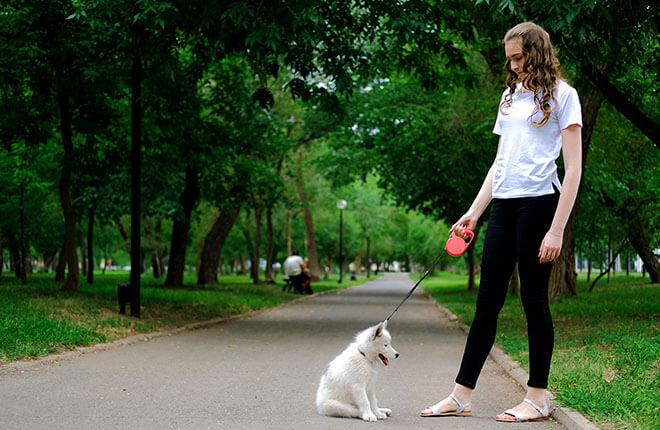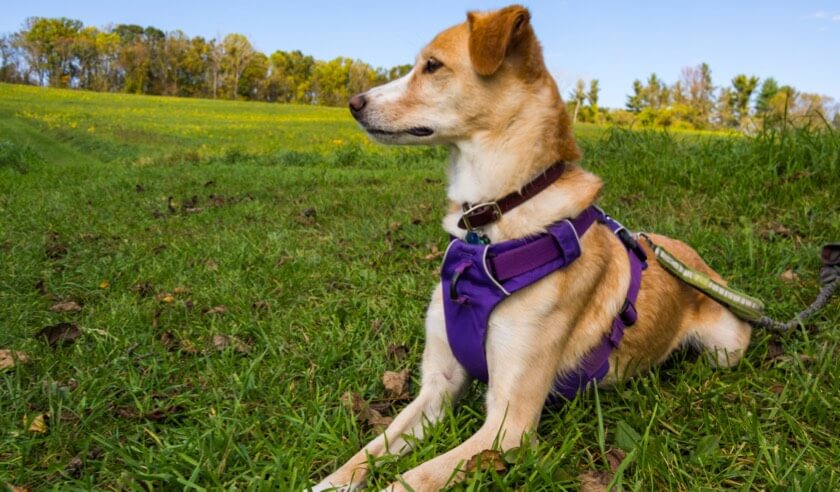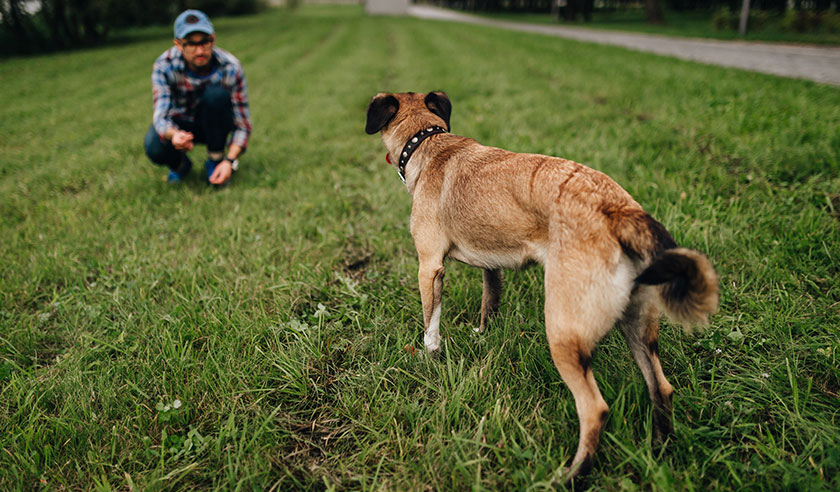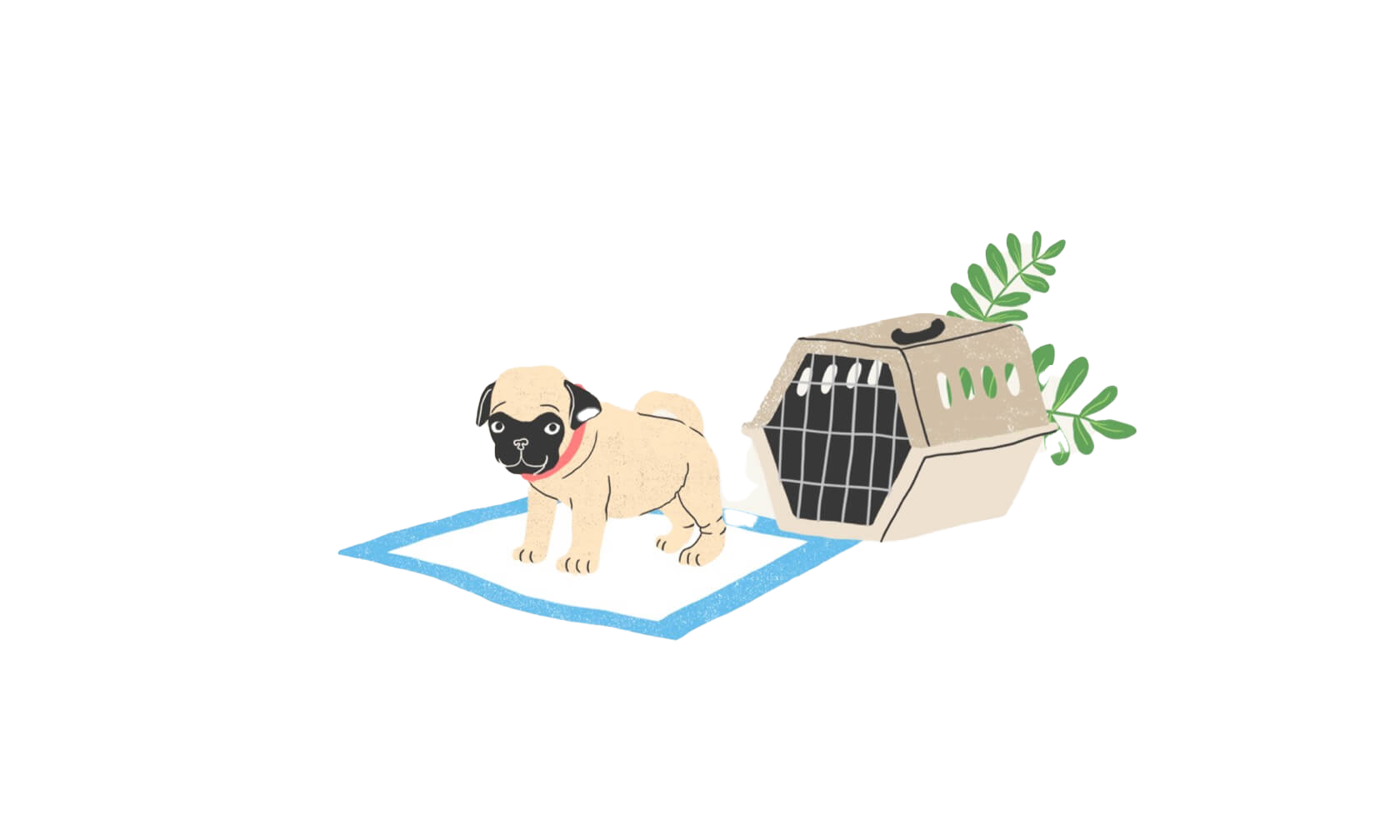When it comes to choosing a leash for your dog, it’s all about safety and comfort. There are plenty of styles, types, materials, and lengths to choose from, which can feel a bit overwhelming when perusing the pet store.
The way you will use your dog’s leash plays an important part in determining what will work best. Will it be for brisk walks around the block, training class, or long sniffing adventures in an open field? Let’s look at the different types of dog leashes, and their safety considerations, so you can find the right type for you and your dog.
Standard Dog Leashes
Standard dog leashes are available in a variety of materials, so it’s important to find one that you’re comfortable holding and a width that won’t “burn” your hand if pulled through quickly. And make sure to choose the right size and weight for your dog.
Nylon
The most common material, nylon is pliable and moderately easy to clean. The thinner the nylon leash, the more likely you’ll get leash burn if your dog suddenly yanks it through your hands. Nylon leashes don’t stand up to lots of chewing, so if your dog likes to chew on their leash, avoid this material.
Leather
With a bit of time, use, and some oiling, leather leashes can become incredibly soft and pliable to use. This material is sturdy but isn’t easy to clean.
Rope
Rope leashes have a little give, making them a good choice for pullers. Look for climbing rope that’s been repurposed for a dog leash, as these are easier to clean than traditional thicker rope.
Biothane
This is a leash coating (typically over nylon) that’s a growing favorite for dog leashes, as it’s extremely lightweight but sturdy enough for large and strong dogs. It’s also waterproof and the easiest to clean.
Standard leashes are available in a variety of lengths. Standard lengths run between 4 to 6 feet long. Shorter leashes, often called “traffic leashes,” can be much shorter at 1 to 3 feet in length, giving you closer control over your dog in crowded areas.
Adjustable Leashes
A leash that provides adjustable lengths can be incredibly useful. These leashes are usually double-ended, meaning there are clips at each end instead of a handle on one end. You can create a handle or loop by attaching one clasp to different attachment points along the length of the leash.
The double-ended feature can provide more control with strong pullers by attaching to both a harness and a collar or head collar. You can create a cross-body loop to wear the leash instead of holding it in your hand while on walks with your dog. Simply shorten the leash to have more control in busy areas and then provide more length for your dog in open spaces. Owners of two dogs can also walk both on the same leash if they have good leash manners.
Retractable Leashes
Retractable leashes are a popular option for walking your dog because they can provide your dog with the benefit of being able to roam at further distances from you. This can be appealing, but there are some safety considerations with them.
The way retractable leashes are designed, they can often teach a dog to pull because pulling against the leash tension is what gives them more length. When your dog is further away from you, you have less control using this leash, putting them at risk of darting across a street, rushing up to another dog, jumping on other people, or getting tangled on something.
Retractable leash handles are bulky and may be hard to hold onto. There have been injuries to dog owners’ fingers and hands if they try to grab onto the extending line to stop their dog. From a safety and training aspect, retractable leashes are not recommended because of these risks.
If you’d like to give your dog more freedom and distance during leashed walks, a long line leash is a perfect alternative.
Long Line Leashes
Long line leashes are available in a variety of lengths, from 10’ to 100’. Most often made from nylon or biothane-coated material, long leashes allow for more freedom to roam and sniff without the training or safety issues of retractable leashes. They do require some practice to learn how to hold and manage. These long leads are perfect for practicing your dog’s recall while transitioning to off-leash behaviors or using on sniffing decompression walks.
Slip Lead Leashes
Slip leads are a collar and leash in one. There are no clasps as the loop is simply placed over the dog’s head. These leashes are useful in veterinary and shelter environments because of their convenience and ease of putting on and taking off a dog. Keeping a slip lead or two in your car can prove helpful if you ever come across a lost dog. Flat and lightweight slip leads can also be used as a makeshift muzzle in case of an injury, so keep one in your dog’s first aid kit.
Because slip leads tighten around the dog’s neck, just like a choke collar does, they should only be used for short trips. The tightening pressure of the slip lead can cause neck damage with continuous use — slip leads are not recommended for dogs who pull on the leash or for training purposes. Some slip leads will have an adjustable safety block built in to prevent the leash from tightening around the dog’s neck past a certain point. If your slip lead has this, ensure that it is fitted properly to keep your dog’s neck safe.
All-In-One Leashes
Similar to slip leads, some leashes are made to work as a head collar or harness and leash all-in-one. These take some practice to learn how to fit and put on your dog but can help train your dog not to pull. If using a head collar leash, you’ll want the correct size and weight for your dog, so it’s comfortable for them to wear. Check that there is a safety feature to prevent the head collar section from slipping off your dog’s nose and from tightening around their mouth.
Safety Considerations for Dog Leashes
While there are several types of dog leashes to choose from, the clasps on those leashes are important, too. Most importantly, the leash you choose should provide security and safety — for both you and your dog. The most common failure point on a leash is the clasp, which attaches the leash to your dog’s collar or harness. When choosing a leash, pick one that has a well-built clasp that is less likely to bend or not close all the way.
There are typically three types of clasps for leashes:
Bolt Snap Clip
This leash clasp is the most common, with a straight bolt controlled by a spring to pull it out of the clasp vertically and snap back when released. They are lightweight, making them a good choice for small dogs. However, larger dogs or those who pull can bend or break these clips. With extended use over time, the spring can weaken, and the bolt might not close completely.
Trigger Snap Clip
This clasp has a spring-loaded lever that is pushed inwards to attach to the dog’s collar or harness. Heavier than the bolt snap, these can stand up to more pulling and pressure and are less likely to break over time. Their weight can prove a bit much for small dogs when attached to a collar.
Carabiner Clip
These clasps tend to be larger and are usually able to withstand more pulling power. Some carabiner leash clips have a locking capability, which is especially useful if your dog has figured out how to unclip other clasp styles.
Now that you know all the different types of dog leashes, you can choose which one will work best for your dog. Check to make sure that the clasp is sturdy and not too big or too small for your dog. Choose a material that feels good in your hands that you’ll be comfortable with while on long walks. And consider what length will work best for the adventures you’ll be taking with your dog.
ZPC-01429R1





